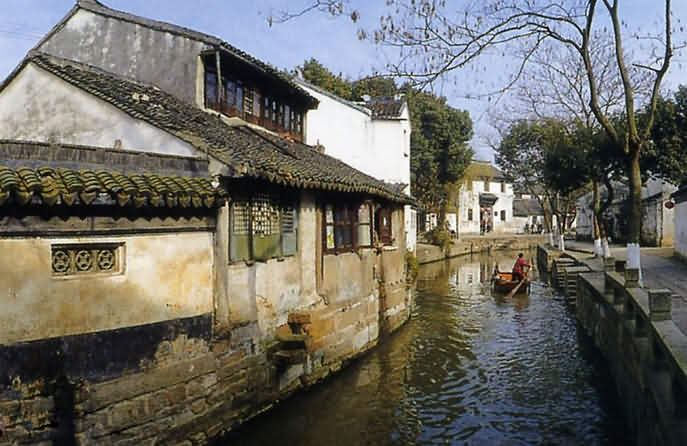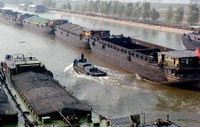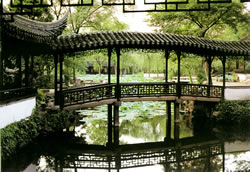Tongli Town

Tongli is a town 20 km from Suzhou, built in the Ming and Qing dynasties, with a history of 600 years.
Surrounded by several lakes, this 0.67-square-kilometer town is divided into 7 parts by the 15 river courses at its midst.
Tongli is a town on the river whose streets are supplemented by rivers, upon which numerous boats float back and forth. Its 20 ancient bridges of the Song, Yuan, Ming and Qing dynasties join the town into an integrated whole.
Over 40 percent of the local architecture was constructed during the Ming and Qing dynasties. The most noted structures are the Two-Hall-Three-Bridge, Tuisi Garden, the Former Residence of Jicheng, Gengle Hall, and Huancui Villa.
What to see in Tongli
Old Houses
The tremendous courtyard of the Tuisi Garden (Retreat and Reflection Garden), which formerly served as the residence of a local noble family of the Qing Dynasty (1644-1911). It was listed among the United Nation's World Cultural Heritage sites in 2000. The most attractive part is its rear garden. While I was walking in the rear garden-the best part of the courtyard-I thought of the secluded life its master once must have led.
There are many other old houses like the Tuisi Garden in Tongli. More than 40 percent of all local residences in the town feature the architecture of the Ming and Qing dynasties (1368-1911), and most of them are wood structures with brick walls and tile roofs. All of the buildings face south. From those old houses, some spanning a street and some built on the water, I experienced the history and culture of the ancient town.
Brick carvings
Tongli was once inhabited by families of noble blood who left behind many large courtyards of red-bricked houses and black-tiled roofs. Elaborate wood and brick carvings, charming in their delicacy and elegance, adorn the gates and interiors. These brick carvings are categorized into paintings and calligraphies. The existing brick carvings can be seen on the gates, screens facing the gates, and ridges of old houses and gardens. Besides the Tuisi Garden, there are more than 40 other well-preserved courtyards, such as the Chongben Hall and the Jiayin Hall.
Life on water
Water is the soul of Tongli. Rivers divide the town into seven embanked sections and serve as transportation arteries through each. All local residences are built on the riverside, and water is the most important part of the lives of Tongli people. In front of each residence, there is a flight of stone stairs leading to the river, where people wash clothes. Some residences have attics stretching above the river, where buckets hang for water collection.
Almost everything, including people's moods, seems washable here, and after a good rinse become totally new. For a visitor from afar, sipping a cup of tea and appreciating the scenery of the water town is a comfortable, joyful experience. Any emotions I had before my arrival seemed to dissolve in the water.
Bridges
Undoubtedly, a water town cannot be short of bridges. In the central of town three rivers join together, forming a Y-shaped watercourse at their confluence. There is a bridge over each, and the three bridges together are called the Ternate Bridges. Standing on one of the bridges, you can look around and enjoy a poetic picture composed of running rivers, small, exquisite bridges, and local residences.
At dawn or dusk, you can walk leisurely along old cobbled lanes, together with two or three friends. No language is necessary. Just watch and listen to feel the silence of the remote past in the carved windows of old residences.




